Occupational environment monitoring at the margarine factory
99,000 ₫
Note: The above price is calculated for one sample, the price may vary depending on the area of the environment that needs monitoring and the movement of the market. For more accurate price support, please refer to the quotation table or contact directly with our consulting staff.
Environmental monitoring of a margarine factory is a session of collecting, analyzing, and evaluating factors in the workplace that may harm workers health.
Table of Contents
Toggle1. Overview of the margarine factory
a. What is a margarine factory?
Factory margarine is a food processing facility where margarine is produced and packaged. Margarine, also known as plant-based butter, is a product made from plant sources such as grass seeds, cocoa beans, coconut, soybeans, and other nuts. The production process of margarine includes handling and processing plant materials to create a product with a texture and flavor similar to or resembling traditional dairy butter.

b. Production stages in a margarine factory
In the margarine factory, the production process may include the following stages:
- Raw material reception: The factory receives plant-based seeds from reliable suppliers. The raw materials are quality-checked and the best seeds are selected for use in the production process.
- Raw material processing: Plant materials are processed to separate seeds, remove shells, and proceed with further processing. This may include grinding, milling, pressing, or dissolving plant materials.
- Processing: Plant materials are processed to create margarine. The processing may involve the use of temperature, pressure, and chemical processes to produce a product with texture and flavor comparable to traditional dairy butter.
- Packaging: Margarine is packaged into small or standard units for storage and transportation. Packaging units may be jars, boxes, bags, or plastic bottles.
- Quality control: Margarine products are quality-checked to ensure compliance with food safety and product quality standards.
- Storage and distribution: Margarine is stored in warehouses and then distributed to retail outlets or end customers.

c. Types of machinery used in the margarine factory
In the margarine factory, several types of machinery and equipment are used to carry out processing and production. Below are some common types of machinery in the margarine production industry:
- Grinder: Used to grind and crush plant materials, such as grass seeds, coconut, soybeans, and other nuts into a fine mixture for further processing.
- Pressing machine: Used to press or crush processed raw materials into a smooth cream-like substance, creating margarine with a soft and uniform texture.
- Mixing machine: Used to combine and mix ingredients such as vegetable oils, thickeners, stabilizers, and flavors to create a homogeneous mixture that meets the texture and taste requirements of margarine.
- Cooling machine: Used to cool margarine and maintain an appropriate temperature to preserve the quality and freshness of the product.
- Packaging machine: Automatic or semi-automatic packaging machines are used to package margarine into jars, boxes, bags, or bottles, ensuring preservation and hygiene of the product.
- Printing and labeling machine: Used to print product information and apply labels on margarine packaging to meet product information and marketing requirements.
- Quality control system: Quality inspection equipment is used to check the quality parameters of margarine, including viscosity, pH, fat content, moisture, and other food safety indicators.

d. What occupational diseases can workers in margarine factories suffer from?
Workers in margarine factories may suffer from several potential occupational diseases related to the working environment and production process. Below are some common occupational diseases that may occur in the food processing industry such as margarine production:
- Allergies: Workers may develop allergies due to exposure to allergens such as grass seeds, coconut, soybeans, or food additives. Allergies may cause symptoms such as itching, dermatitis, sneezing, or breathing difficulties.
- Respiratory diseases: Exposure to dust, fumes, or chemical vapors during margarine processing may cause respiratory problems. Respiratory diseases may include bronchitis, chemical pneumonia, or lung diseases caused by inhaling dust.
- Skin diseases: Exposure to chemicals during margarine processing may cause irritation and dermatitis. In particular, workers may face problems if they do not follow protective measures and use proper personal protective equipment.
- Musculoskeletal diseases: Work involving heavy loads or mechanical impacts may cause musculoskeletal injuries, including spine, joint, and muscle injuries.
- Nervous system diseases: Exposure to toxic chemicals during margarine production may negatively affect the nervous system, causing symptoms such as headaches, dizziness, nausea, or impaired neurological function.

e. Common types of margarine on the market
On the current market, there are many common types of margarine used as alternatives to traditional dairy butter. Below are some popular types of margarine:
- Avocado Butter: Made from the seed of the avocado fruit. It has a smooth texture and a natural light green color. Avocado butter is rich in nutrients and contains healthy fats such as Omega-3 and Omega-6 fatty acids.
- Coconut Butter: Made from coconut, with a distinctive coconut flavor. It has a soft texture and is rich in healthy fats. Coconut butter is widely used in vegetarian cuisine and diet menus.
- Cocoa Butter: Extracted from cocoa beans and has the natural sweet aroma of chocolate. It has a harder texture compared to other margarines and is commonly used in chocolate production and cosmetics.
- Peanut Butter: Made from roasted peanuts and ground into a smooth cream. It has the distinctive flavor of peanuts and is often used as an additive in desserts, noodles, and bread.
- Soy Butter: A product from soybeans, commonly used as a substitute for butter in cooking and baking. It has a lower fat content and is a rich plant protein source.
- Almond Butter: Made from almonds with a distinctive almond aroma. It has a smooth texture and delicious taste. Almond butter is rich in healthy fats and offers many health benefits.
- Shea Butter: Extracted from the shea tree seeds and has a light white color. It has a smooth texture and good moisturizing properties. Shea butter is often used in skincare and haircare products.
2. Overview of occupational environment monitoring services
a. What is occupational environment monitoring in a margarine factory?
Occupational environment monitoring (or measurement of occupational environment) in a margarine factory is the activity of collecting, evaluating, and analyzing measurement indicators of occupational environmental factors at the margarine factory, in order to take timely measures to minimize environmental harm to workers’ health and prevent occupational diseases. Occupational environment monitoring is a mandatory regulation for margarine factories.
Occupational environment monitoring plays the most important role in caring for, protecting, and improving workers’ health because the main resource of the enterprise and the direct source of profit is the workers. Workers who are frequently exposed to hazardous and occupational harmful factors beyond permissible standards will be affected in health and may develop occupational diseases.
REGISTER FOR OCCUPATIONAL ENVIRONMENT MONITORING SERVICE
b. Occupational environment monitoring program of Nam Viet
The occupational environment monitoring program of Nam Viet is a program researched by monitoring engineers in the field of occupational safety and environmental protection. With the goal of ensuring workers’ health and safety, this program uses modern measuring methods to monitor air quality, water, microclimate factors, physics, dust… in the working environment. This is a very important program in ensuring a safe working environment and protecting workers’ health.
In addition, the occupational environment monitoring program of Nam Viet also plays an important role in researching and developing new solutions to improve occupational environment quality. With the dedication and professionalism of the monitoring expert team, the exclusive monitoring program of Nam Viet is becoming a breakthrough in occupational safety management and environmental protection in Vietnam.

c. Standardization in the occupational environment measurement process
Standardization in the occupational environment measurement process of Nam Viet is a very important aspect in ensuring the quality of measurement results. To ensure accuracy and reliability of the measurement results, this program uses recognized standards and standardized procedures of the Department of Health Ho Chi Minh City. This ensures that the collected data will be used with high reliability in evaluating the occupational environment and making decisions to improve the working environment to protect workers’ health.
These standardized processes also ensure that measurement results are conducted by monitoring specialists with high qualifications and many years of experience, helping managers and experts to trust the results from An Toan Nam Viet and make accurate and valuable decisions in protecting workers’ health and the environment.
By applying standardization in the occupational environment measurement process, Nam Viet is demonstrating its commitment to ensuring a safe working environment and protecting workers’ health, while also actively contributing to the development and improvement of occupational safety management and environmental protection quality in Vietnam.
d. Monitoring reports in margarine factories
The occupational environment monitoring results are prepared according to form No. 04 Appendix III issued with Decree 44/2016/ND-CP and prepared in 02 copies: 01 copy sent to the labor facility that signed the contract for occupational environment monitoring and 01 copy kept at the organization performing occupational environment monitoring.
The storage period for occupational environment monitoring results according to the law is indefinite file storage.

e. Frequency of occupational environment monitoring according to the law
According to Clause 2 Article 18 of the Law on Occupational Safety and Hygiene 84/2015/QH13, employers must organize occupational environment monitoring to evaluate harmful factors at least once a year.
f. Time for submitting occupational environment monitoring reports according to the law
The deadline for submitting the report is before December 31 every year. Enterprises belonging to production facilities are required to submit occupational environment monitoring reports to the Department of Health at the locality where the main headquarters and workers are located.
When there are changes in technology processes, production processes, or when renovating or upgrading labor facilities with potential new harmful factors to workers’ health, enterprises belonging to production facilities must update occupational hygiene records related to harmful factors requiring occupational environment monitoring.
g. Regulations on penalties for violations of occupational environment monitoring for employers
According to Article 27 of Decree No. 12/2022/ND-CP dated January 17, 2022, regulating administrative penalties in the field of labor, social insurance, and Vietnamese workers working abroad under contracts.
- Clause 2: A fine of 2,000,000 – 5,000,000 VND for employers who do not publicly announce to workers at occupational environment monitoring sites and at inspected and evaluated sites the results of occupational environment monitoring and results of inspection, evaluation, and management of hazardous factors at the workplace immediately after results are available.
- Clause 3: A fine of 20,000,000 – 40,000,000 VND for employers who fail to conduct occupational environment monitoring to control harmful effects on workers’ health as prescribed by law.
- Clause 4: A fine of 40,000,000 – 60,000,000 VND for employers who collude with organizations conducting occupational environment monitoring to commit fraud in occupational environment monitoring activities but not to the extent of criminal liability.
3. Harmful environmental factors for workers in the margarine factory
Workers in the margarine factory may be exposed to several harmful environmental factors. Below are some potential environmental factors that may harm workers in the margarine processing industry:
- Fumes and chemical gases: The margarine production process may use chemicals such as solvents, detergents, and antioxidants. Exposure to fumes and gases from these substances can cause irritation to the eyes, nose, throat, and respiratory system, leading to problems such as headaches, fatigue, shortness of breath, or pneumonia.
- Dust and particles: During margarine processing, dust and particles may arise from raw materials and processing activities. Inhaling dust and particles can irritate the respiratory system and sometimes cause problems such as pneumonia or other respiratory diseases.
- Temperature and humidity: Some margarine factories may have working environments with high temperatures or high humidity. This can cause heat stress, fatigue, dehydration, and other health problems.
- Noise: Production and operation of machinery in the factory can generate high noise levels. Continuous and loud noise can cause stress, reduce concentration, damage hearing, and cause other health issues.
- Additives and detergents: Margarine production may use additives and detergents to improve product quality and durability. Exposure to these additives and detergents can cause skin irritation, allergies, or dermatological problems.
REGISTER FOR OCCUPATIONAL ENVIRONMENT MONITORING SERVICE
4. Measures to improve the working environment in the margarine factory
To improve the working environment in the margarine factory and protect workers’ health, the following measures can be applied:
- Chemical management: Ensure safety in the use and storage of chemicals. Provide complete information on properties and safe usage of chemicals to employees. At the same time, ensure exposure to fumes and chemical gases is controlled and minimized.
- Dust and particle management system: Ensure proper management of dust and particles during margarine processing by using effective ventilation and dust extraction systems. At the same time, ensure the use of personal protective equipment (masks, respirators, safety goggles) to protect the respiratory system from dust and particles.
- Temperature and humidity adjustment: Control temperature and humidity in the working environment to ensure comfort and safety for workers. Use air conditioning and humidity control systems to adjust the working environment as required.
- Noise control: Apply noise reduction measures such as using soundproofing and insulation materials for machines and equipment generating noise. At the same time, ensure employees use ear protection to reduce noise to a safe level.
- Training and guidance: Provide sufficient training on occupational safety, work procedures, and the use of personal protective equipment. Ensure employees are informed and properly instructed to avoid injury risks during work.
- Inspection and supervision: Conduct periodic inspections and monitoring of the working environment to ensure compliance with occupational safety and environmental regulations. This includes checking air quality, measuring noise levels, and monitoring other environmental factors to ensure compliance with safety standards.
- Encouraging personal hygiene: Encourage employees to maintain proper personal hygiene, including washing hands before and after work, properly using personal protective equipment, and maintaining cleanliness in the working environment.
- Regularly organize occupational environment monitoring in factories and enterprises, collect and analyze harmful factors for workers, and adjust to reduce hazards to prevent occupational diseases for them.
5. Benefits of periodic monitoring in the margarine factory
An Toan Nam Viet provides enterprises with excellent benefits when using occupational environment monitoring services according to Decree 44/2016/ND-CP on the management and control of harmful factors in the working environment affecting workers.
- Enterprises can proactively control harmful factors at workshops or factories.
- Receive consulting and recommendations on measures to minimize harmful factors and improve the quality of the working environment.
- Indirectly protect human resources, the main factor in enterprise development.
- Minimize the harmful effects of occupational diseases on human health, thereby reducing future medical treatment costs.
- Workers’ health is improved, leading to guaranteed and sustained product quality and productivity.
- Comply with occupational safety laws, avoiding legal risks.
- Create credibility and professionalism in all aspects, thereby enhancing the brand value of the enterprise.
The occupational environment monitoring service of Nam Viet is the solution to minimize the harmful effects of occupational diseases, contributing to a healthy and high-quality working environment.

6. National occupational environment monitoring center
Occupational environment monitoring center of Nam Viet is a professional unit in monitoring and measuring the quality of the working environment across all provinces in Vietnam. With an experienced team of monitoring specialists, the center uses modern measuring equipment to ensure accuracy and reliability.
In addition to providing monitoring services, the center also supports customers in planning, handling, and monitoring occupational environment issues. With the motto “customers are the center,” the center focuses on customer satisfaction, meeting all customer needs, and committing to providing the best solutions for enterprises.
REGISTER FOR OCCUPATIONAL ENVIRONMENT MONITORING SERVICE
With investments in technology, equipment, and human resources, the Nam Viet monitoring center has been and is becoming one of the reputable units in the field of occupational environment monitoring in Ho Chi Minh City with the following goals:
- We always value brand reputation and the quality of our products and services.
- We provide customers with the best and most suitable solutions possible.
- Together with a team of Masters and Engineers with extensive experience and expertise, we aim to protect the environment and benefit enterprises.
- With the Nam Viet Environment Monitoring team, your company will receive professional service from experts in the monitoring field and also enjoy the best cost advantages.
The occupational environment monitoring process at Nam Viet includes the following basic steps:
- Before conducting occupational environment monitoring, our company always ensures that machinery and equipment serving monitoring activities are adjusted and calibrated according to legal regulations.
- Strictly follow the occupational environment monitoring process committed with the Department of Health.
- Truthfully report occupational environment monitoring results to employers.
- In case monitoring results do not ensure worker safety, Nam Viet company will support by providing remedial solutions, and the workplace will implement as follows:
- Implement measures to improve working conditions to minimize harmful factor impacts and prevent occupational diseases.
- Organize health check-ups to detect occupational diseases and related illnesses early for workers in unsafe environments.
- Provide material allowances for workers according to labor law regulations.

7. Occupational environment monitoring quotation
To help enterprises perform occupational environment monitoring professionally and effectively, Nam Viet provides customers with a service price list for occupational environment monitoring with quality and reasonable costs.
- Our monitoring quotation provides detailed information on the prices of monitoring services we offer, including costs related to transportation, measurement, analysis, and reporting. Customers can be completely assured of the accuracy and reliability of the monitoring reports we provide.
- We are committed to always offering the most competitive and reasonable prices in the market, and we are always ready to provide fast and professional consulting on all monitoring service inquiries.
- With the Nam Viet monitoring quotation, customers can easily choose service packages suitable for their needs. We are committed to delivering the highest customer satisfaction with professional service quality.
No comments yet

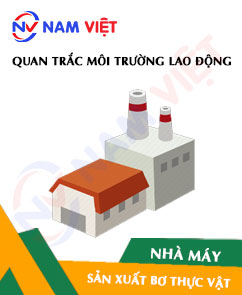
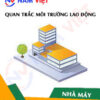
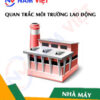
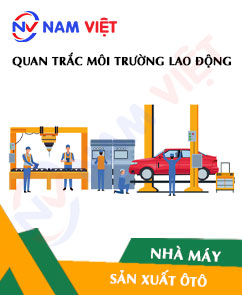
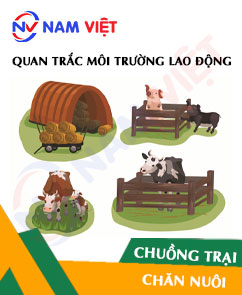

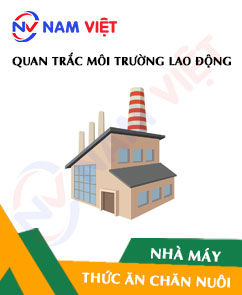


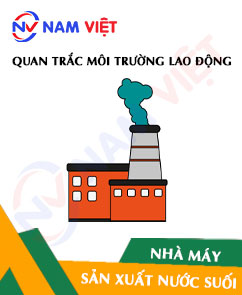

Review Occupational environment monitoring at the margarine factory
There are no reviews yet.